Behind the scenes of school feeding
👩🏽🌾 Doreen, the farmer supplying the school with fresh food
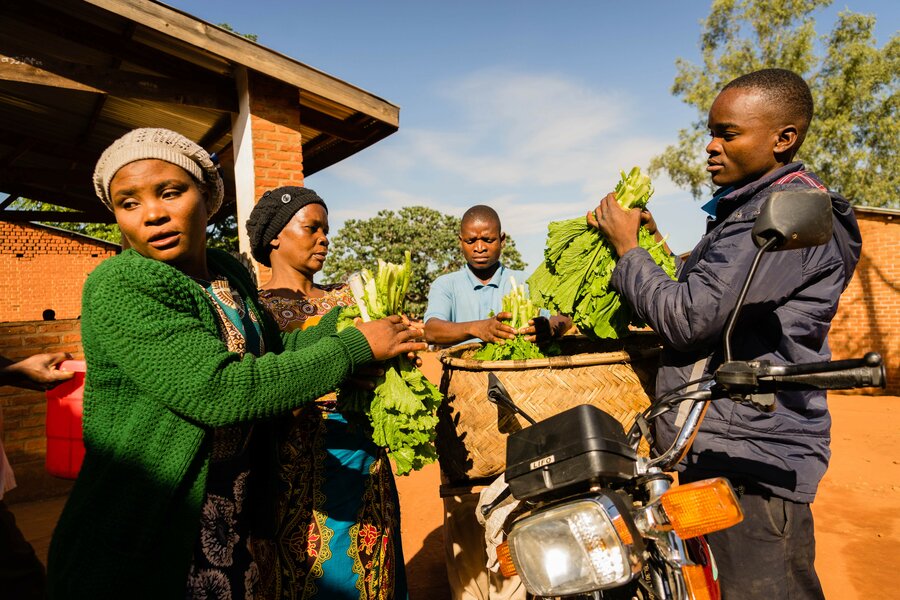
"Since our cooperative started working with the World Food Programme (WFP) and the school, I now sell my produce in high volumes and make extra money. I am now able to provide for my family and pay school fees for my four children," says Doreen Biziwick who sells part of her harvest to Nalingula school. This morning, she delivers bananas and veggies.
👨🏽🍳 Christopher, the volunteer cook who wakes up at 4:00 am
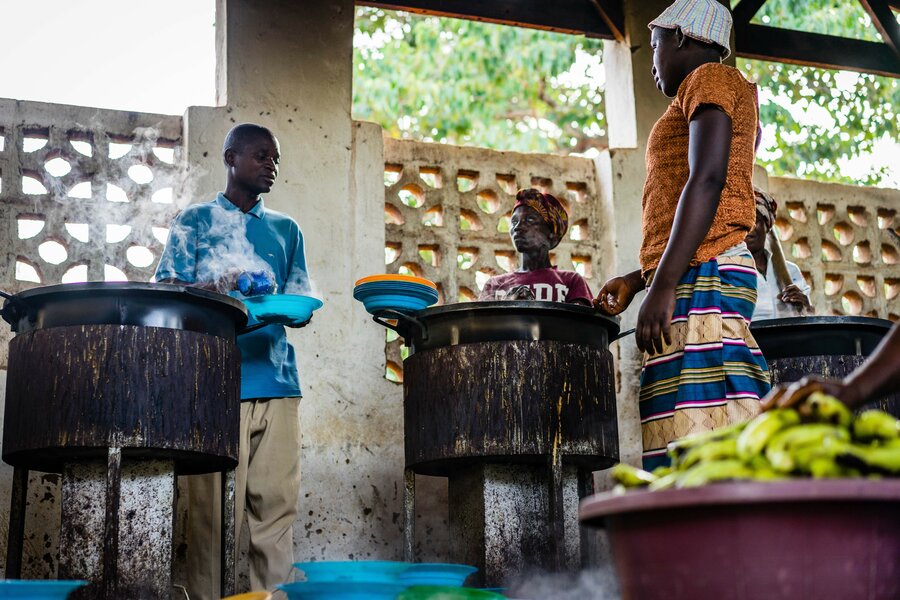
"I am always happy to see students going to class full of energy. My daughter, Brenda, was always coming home from school at break time to eat something but she would go back late very often. Now that she has breakfast here, even her school performance has greatly improved," says parent and volunteer cook Christopher Chapweteka.
👩🏽🏫 Charity, the teacher who gets active children every morning
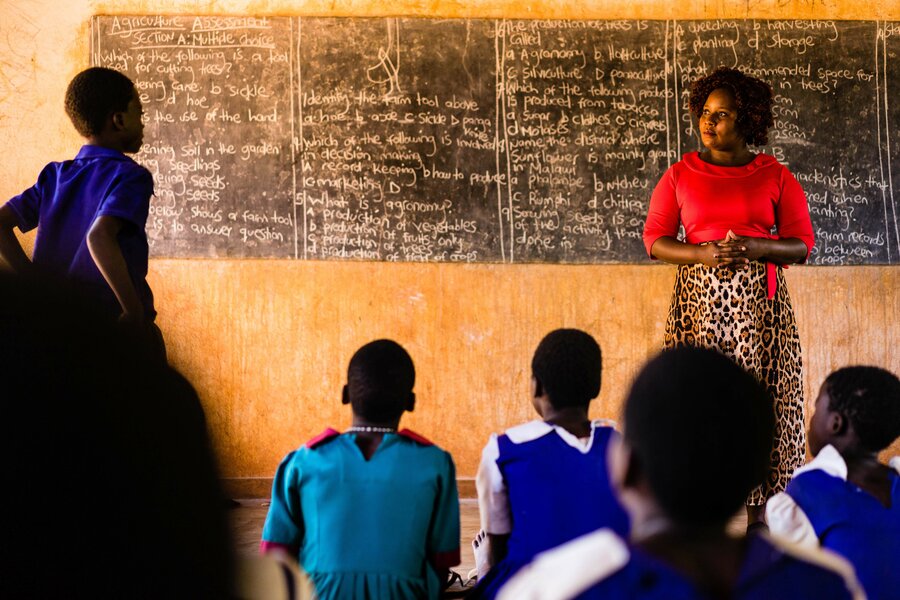
"Children are more attentive when they have something in their stomach before starting class. It helps concentration and pushes parents to also send girls to school. I was teaching in a school where there were no school meals and kids were either showing up late or dropping out when food became scarce at home," says teacher Charity Kadalinga who has been teaching at Nalingula school for two years now.
👧🏽 Agnes, the skipping rope champion
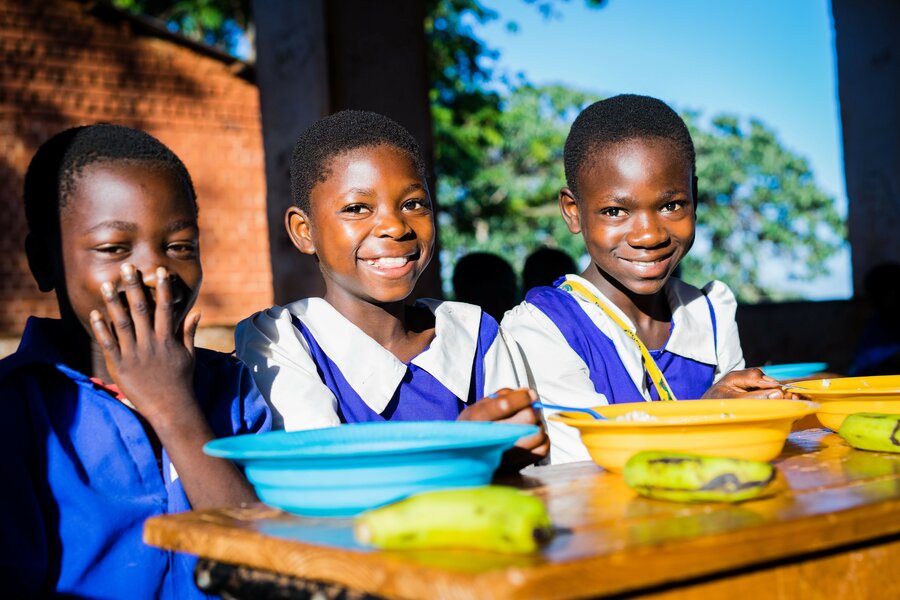
First come, first served! Agnes waits patiently for Christopher to fill up her plate. As others are finishing their meals, she plays with her friends before entering class for a new school year that we hope will be successful for her and her classmates.
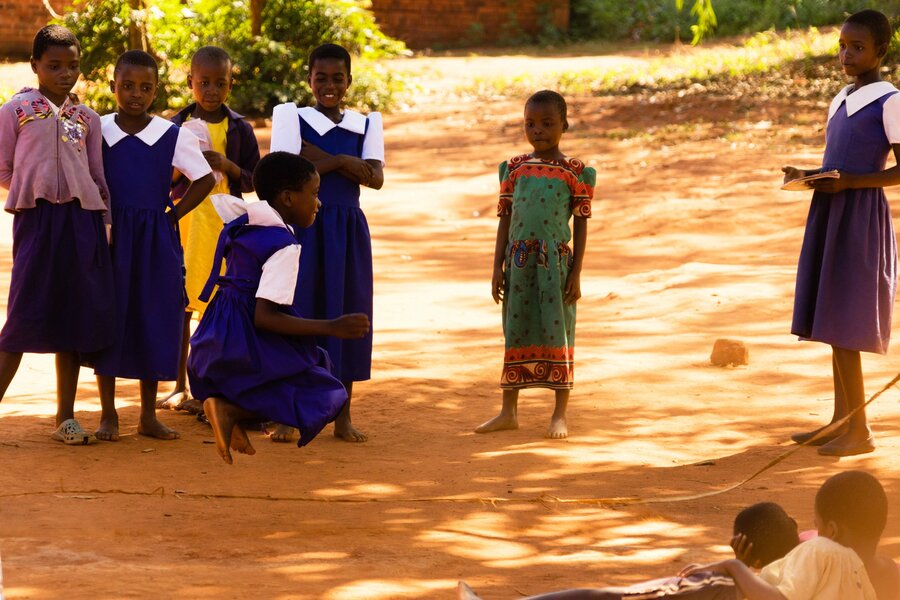
👩🏽🎓 Jubida, the girl who graduated from Nalingula school

"Last year, I was studying in Nalingula school. Classes were difficult but I can tell that having school meals everyday helped me to focus on my exams and I succeeded. Now, that I am at Phalombe secondary school, I would like to continue my studies as long as I can and become a nurse,"says Jubida Maclan.
Jubida continues to benefit from school meals thanks to a WFP/US Department of Agriculture-supported programme. The initiative also provides scholarships to vulnerable schoolchildren based on school attendance and needs.

Home-grown school meals is WFP's innovative approach that links the school meals programme with local smallholder farmers. The schools provide local farmers with a predictable client while the stable income encourages farmers to diversify their production and increase their productivity.
Children enjoy healthy and diverse meals made with fresh ingredients. In 2017, almost over 107,000 children benefited from home-grown school meals in Malawi thanks to the support of Iceland and Norway.
School meals not only provide nutrition and energy to students — helping them concentrate and learn — they also provide a strong incentive for parents to send their daughters and sons to school. This increases the school enrolment rate. In Malawi, the enrolment rate for schools supported by WFP's school feeding programme increased by 8 percent in 2017, compared to the national average of 3 percent.
